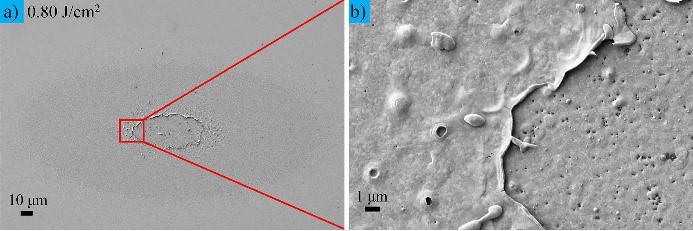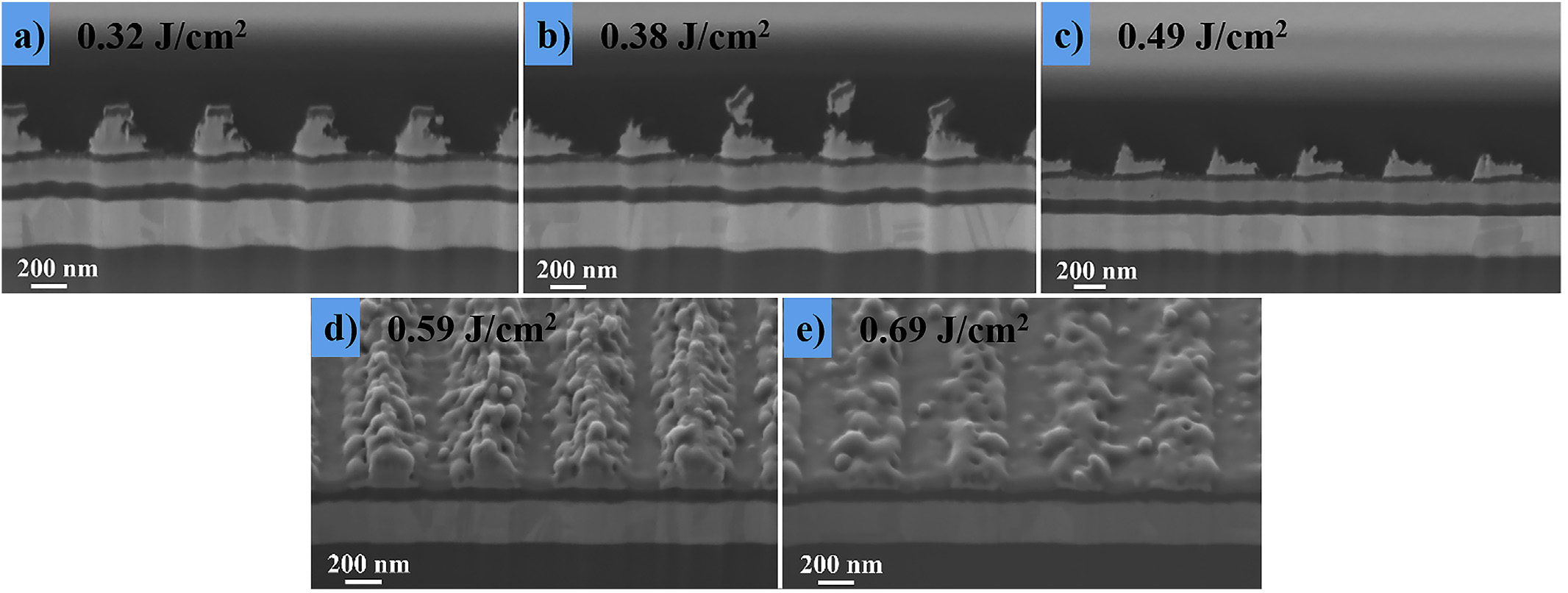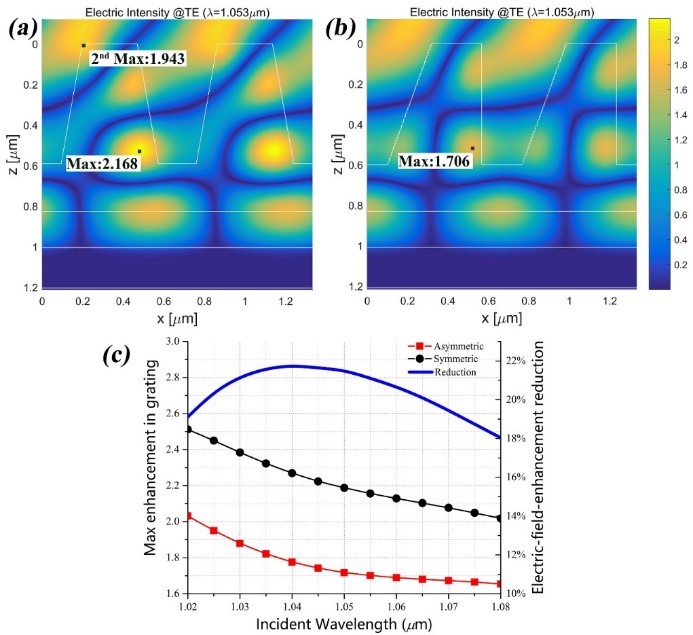The pulse compression grating (PCG) is one of the most critical components of a high-power grating-based chirped pulse amplification (CPA) laser system, which is an important method for improving short-pulse-laser output intensity. However, when exposed to extremely high intensity, the laser induced damage threshold (LIDT) of those gratings always limits the final output intensity. Therefore, improvement of LIDT of PCG is crucial for the development of CPA laser systems.
Recently, advances on laser damage were made in the research group led by Prof. Shao Jianda and Prof. Jin Yunxia from Shanghai Institute of Optics and Fine Mechanics, Chinese Academy of Sciences. Their serial findings include: (1) adhesion strength between the metal film and substrate was the main reason limiting the LIDT of metal gratings; (2) The initial damage was induced in the HfO2 layer of sandwich structure in a metal multilayer dielectric grating (MMDG); (3) Designing asymmetric grating ridge can reduce electric-field-enhancement in metal-dielectric grating while maintaining high diffraction performance.
Metal gratings were firstly and commonly used as PCGs in CPA systems because metals can naturally reflect light with broadband high efficiency. Two different types of gold grating were fabricated by electron beam evaporation, and the femtosecond laser-induced damage properties were evaluated. The first sample was gold film deposited on fused silica, whereas the second was gold deposited on photoresist. The damage threshold of gold film on fused silica was 0.64 J/cm2 and the typical damage morphologies were thermal ablation and melting. The damage threshold of gold films on photoresist was 0.30 J/cm2 and the typical damage morphologies were blisters or peeling off of gold film. In order to better understand the impact of the substrate on the properties of the whole sample, the adhesion between the gold film and substrate were measured and the experimental results well agreed with the theoretical analysis. The results indicate that gold films deposited onto grating-structured fused silica can display more powerful laser damage resistance performance.
Compared with metal gratings, MMDG with high diffraction efficiency (DE) and broad bandwidth is a viable candidate for the realization of PCG with higher LIDT because of lower absorption. A MMDG with a sandwich ridge which consists of a layer of HfO2 sandwiched between two SiO2 layers was studied. The initial damage position was on the HfO2 layer of the ridge at the location where the enhancement of the electric field intensity (normalized by E2/E02) is highest in the grating. The dramatic increase in the imaginary part of the dielectric constant of the middle HfO2 layer indicates that it strongly absorbs laser energy, resulting in damage to the MMDG.
For achieving higher LIDT, an optimized isosceles trapezoidal metal-dielectric grating was modified into non-isosceles shape with two base angles for modulating the distribution of electric field intensity in the grating. Compared with the isosceles trapezoidal grating, the grating with asymmetric ridge got a 0.04% reduction of DE in TE polarization at 1053 nm central incident wavelength but a 21.3% reduction of electric-field-enhancement in grating structure. This design method can be applied to any surface-relief gratings to reduce the electric-field-enhancement for improving the LIDT of grating and supporting the grating-based CPA system to develop into much higher power levels.
These results were published in Scientific Reports and Optical Martials. These works are supported by the National Natural Science Foundation of China, and Science and Technology on Solid-State Laboratory and the Shanghai Science and Technology Committee Program.
Article Website:
https://www.sciencedirect.com/science/article/pii/S0925346717307292
https://www.nature.com/articles/s41598-018-22479-3
https://www.sciencedirect.com/science/article/pii/S0925346718302805

Figure 1. Typical damage morphologies of gold film on fused silica at a fluence of 0.80 J/cm2.

Figure 2. Cross-sectional profiles of the damage spot at different laser fluences obtained by FIB technology.

Figure 3. The enhancement of the electric field intensity in TE polarization at 1053 nm in the gratings with isosceles and asymmetric trapezoidal grating ridges.
(Image by SIOM)
Contact:
Mr. Cao Yong
General Administrative Office
Shanghai Institute of Optics and Fine Mechanics, CAS
Email: caoyong@siom.ac.cn
Home | About SIOM | Newsroom | International | Admissions | Publications | Contact
@ Shanghai Institute of Optics and Fine Mechanics Tel:02169918000 沪ICP备05015387号-1 Technical support:Qingyun Software